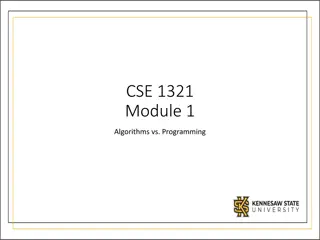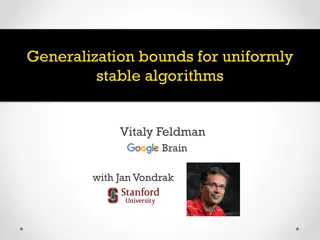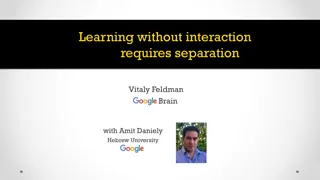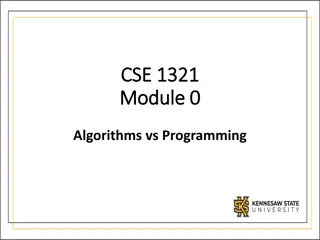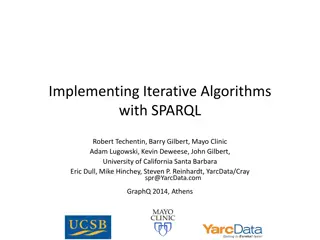Enhancing Machine Learning Algorithms with Heterogeneous Computing
Team 5 is working on expanding a prior initiative by developing code to simultaneously run three different machine learning algorithms - Preprocessing, Blink Detection, and Eye Tracking. Their project involves implementing these algorithms on a Xilinx Kria evaluation board using process and memory isolation techniques to ensure efficient and seamless operation. User needs vary from high accuracy and resource efficiency to adaptability and user-friendliness, with a focus on personal, medical, and educational applications. The team adheres to engineering standards to meet robustness, performance, safety, and privacy requirements, along with specific system requirements including running Docker, using Xilinx Kria board, and implementing various machine learning algorithms.
Download Presentation

Please find below an Image/Link to download the presentation.
The content on the website is provided AS IS for your information and personal use only. It may not be sold, licensed, or shared on other websites without obtaining consent from the author.If you encounter any issues during the download, it is possible that the publisher has removed the file from their server.
You are allowed to download the files provided on this website for personal or commercial use, subject to the condition that they are used lawfully. All files are the property of their respective owners.
The content on the website is provided AS IS for your information and personal use only. It may not be sold, licensed, or shared on other websites without obtaining consent from the author.
E N D
Presentation Transcript
Group 5 Heterogenous Computing for Machine Learning Algorithms Team: Santiago Campoverde, Jonathan Tan, Joshua Czarniak, Justin Wenzel, and Kai Heng Gan
Project Overview Expansion of a prior initiative and developed code base Achieve the ability to simultaneously run three different algorithms/operations Preprocessing Blink Detection Eye Tracking Implement on a Xilinx Kria evaluation board Using process and memory isolation techniques to achieve efficient and seamless operation
User Needs Personal Researcher High accuracy and reliability within system Resource efficiency to keep costs low in a personal funded project Detailed documentation for future development Medical Researcher Ability to adapt/customize the system for different patients and needs User-friendly system that is easy to setup and execute Protects the privacy of users personal results and details Educational Tech Develop a real-time monitoring system on tracking students' eye for academic purpose Identify the study environment that students interested in Extensive environment that can easily allow for modifications or experimentation for research
Engineering Standards IEEE 3129-2023 - IEEE Standard for Robustness Testing and Evaluation of Artificial Intelligence (AI)-based Image Recognition Service IEEE 2802-2022 - IEEE Standard for Performance and Safety Evaluation of Artificial Intelligence Based Medical Devices: Terminology IEEE 7002-2022 - IEEE Standard for Data Privacy Process IEEE 3156-2023 - IEEE Standard for Requirements of Privacy-Preserving Computation Integrated Platforms IEEE 2842-2021 - IEEE Recommended Practice for Secure Multi-Party Computation IEEE 2952-2023 - IEEE Standard for Secure Computing Based on Trusted Execution Environment IEEE 1484.1-2003 - IEEE Standard for Learning Technology - Learning Technology Systems Architecture (LTSA)
Requirements An environment that could run the docker which contain the disk image from previous team Xilinx Kria evaluation board System-on-Modules (Kria KR260) DPU (DPUCZDX8G) Pupil tracking machine learning algorithm Blink detection machine learning algorithm Image preprocessing algorithm Profiler program (Vitis AI Profiler)


